The purpose of this accelerator is to allow the
publisher (CRM) to post timely CRM-centric updates to the reader’s RSS
reader of choice. For example, if a new lead is assigned to a
salesperson, rather than send an email or expect the salesperson to
check his leads within CRM, the lead is published, and the salesperson
sees it the next time he opens his RSS reader. RSS publications can
apply to any entity within CRM if users desire.
The Notifications
accelerator uses RSS to drive information via any RSS reader client. RSS
stands for Really Simple Syndication and enables content publishers to
syndicate or post information automatically. RSS provides readers a way
to aggregate their favorite feeds with timely updates within Outlook or
many other types of RSS readers, including readers that can live within
cell phones or PDAs.
In other words, rather
than create a CRM workflow that pushes email to CRM users when a new CRM
lead is assigned to them, add an RSS feed to CRM users’ Outlook,
Windows Vista gadgets, or RSS applications on their cell phones so that
they may consume this data on demand.
The Notifications accelerator is composed of the following components:
Salespeople see when a new lead has been assigned to them.
Customer service can see when new cases have been assigned to them.
Keeps up-to-date on events happening across the organization.
Custom
RSS pages can be managed via a custom dynamic link library (DLL) within
the ISV folder (fully automated installation, including source code).
Eliminates email; now users choose what they receive.
Embedded within toolbar is an RSS menu. Subscribe or choose subscription.
Select
almost any entity within CRM and then any subset of the entity: My
Active Accounts, My Active Contacts, My Open Leads, My Campaigns, My
Active Cases, and so forth.
Use any RSS reader, including mobile phones, or Outlook 2007 or Vista gadgets.
Within Outlook 2007, you can configure New Item Alerts that pop up and show that you have a new RSS feed item.
Figure 1 shows the Notifications accelerator.
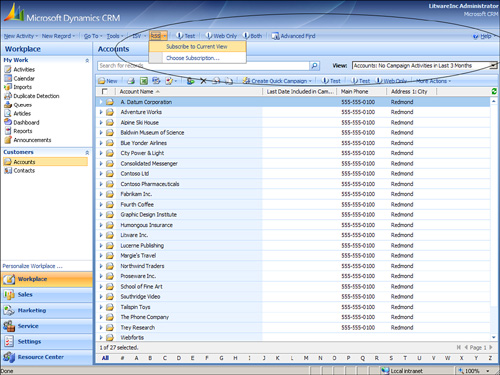
For a detailed
breakdown of modifications, review the documents within the
\Documentation folder included with the download files. All files can be
downloaded from the Codeplex website at http://crmaccelerators.codeplex.com.
Once the notifications accelerator is downloaded and unzipped, you’ll find the following materials in the Source folder:
Documentation for installation, data flow, and licensing
Source code (Visual Studio 2008 is required to work with the solution files.)
Installing the Notifications Accelerator
The following steps walk you through the installation of this accelerator:
1. | Download
and run the executable, CRMNotifications_V1.0_RTW.exe. This contains
detailed instructions and an overview of the accelerator, and all files
required to install the accelerator.
|
2. | Within the Installation Wizard, click Fully Automated Installation.
Note
The Fully Automated
Installation option provides the same functionality as navigating to the
\Installation\Full Install folder and then running Setup.exe.
|
3. | Run the Setup.exe.
|
4. | When prompted for the organization, place a check mark next to your organization, and then click Install, as shown in Figure 2.
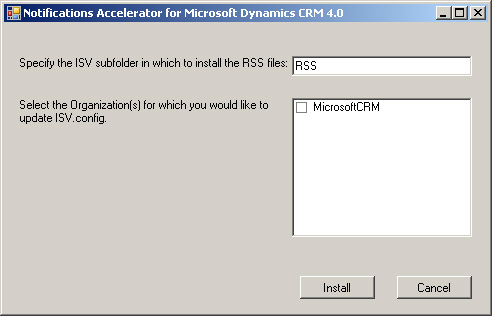
|
5. | You
must enable ISV.Config customizations for the RSS drop-down to appear
within CRM. Within Microsoft Dynamics CRM, select Settings,
Administration, System Settings, Customization and set the Custom Menus
and Toolbars section to reflect which clients you want the RSS menu to
appear within (Web/Outlook/Outlook Offline), as shown in Figure 3.
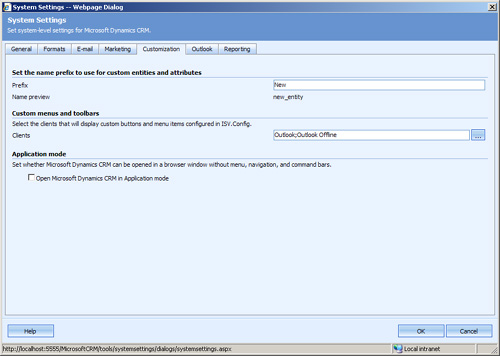
|
Using the Notifications Accelerator
The Notifications
accelerator can be applied to many scenarios. For example, you could
enable Windows Vista gadgets on your desktop and then display all your
active cases, or you could use the Outlook RSS reader and view them in
Outlook.
Figure 4 shows how to configure the Notifications accelerator to subscribe to My Active CRM Cases, and Figure 5 shows how they will appear in Outlook if Customer Issue is selected.
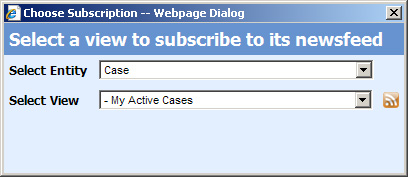
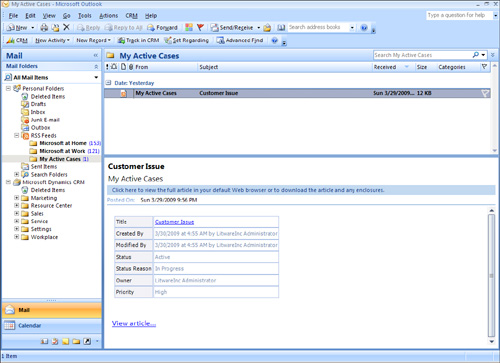
Note
Outlook is used as an
example for displaying this RSS feed, although the RSS feed can be
viewed in any RSS reader, including Internet Explorer.
You can easily see the
power of this accelerator as it quickly and effortlessly pushes
information out with little configuration necessary from the end user.
Organizations have used this accelerator to publish information to their
internal intranet sites and to external websites.